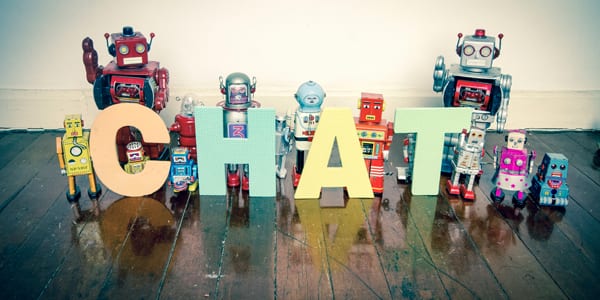 Artificial Intelligence (AI) and chatbots (bot) are rapidly emerging as technologies impacting our daily lives, as well as changing the way customers interact with brands.
Artificial Intelligence (AI) and chatbots (bot) are rapidly emerging as technologies impacting our daily lives, as well as changing the way customers interact with brands.
For starters, picking up the phone and calling customer service. Currently, we spend about 900 million hours a year on the phone on hold waiting for customer service. On average, that means we will spend 43 days of our life on hold.
This is a growing problem as customer expectations are changing and people are less willing to spend time on hold. A recent survey indicated nearly two-thirds of us are only willing to wait two minutes or less before hanging up. Five years ago, that number was about 10 minutes. A frustrated customer will hang up and 34 percent of those that hang up do not callback.
To make matters worse, the quality of the customer experience on the phone once we get service is usually worse than actually waiting for service. The phone has proven to be a terrible customer service channel – and a better solution is long overdue. Clearly, businesses must change as a result of evolving customer expectations – and it will. Bots are beginning to be leveraged as a customer service solution. They eliminate wait time, are available 24/7 and have the potential to deliver a better customer experience.
Market Growth and Demand
We are only beginning to experience the impact of AI and bots. Experts further expect these changes will emerge and evolve at a rapid pace in the immediate future. The global chatbot market was valued at $88.5 Million in 2015 and is anticipated to grow at a substantial compound annual rate of more than 35 percent from 2016 to 2023.
Not only is the technology developing at a rapid pace, there is also a demand and level of comfort with the technology:
- 63 percent of customers indicate they would be willing to message a bot
- 29 percent prefer to use messaging to interact with a business
- 20 percent of Google queries are already administered by voice
Furthermore, AI and bot technology are not just a customer service solution, a sampling of recent articles described other uses that included:
- Purchasing tickets
- Financial planning and accounting
- Legal advice and support (a 19-year-old has already created a bot that helps people contest parking tickets)
- Ordering food
- Security screening
- Personal stylist
- Personal concierge
- Toy and gaming applications
33,000 companies have already built Facebook bots and that number is expected to increase dramatically over the coming years.
There are also a number of articles detailing the promise that AI and bots will transform everything from healthcare to education.
AI and bot technologies are even reporting news. The Washington Post leveraged the technology to report key information from the 2016 Rio Olympics, including results of medal events. This allowed reporters to focus on reporting more substantive stories. News organizations will continue to integrate the technology and are using terms like “automated storytelling” to describe the evolution.
Integration with the Internet of Things and Big Data
AI and bot technology has potential benefits to almost every commercial, government, educational, and not-for-profit entity. It will transform the ecommerce, marketing and advertising space – along with our daily lives. In a not-too-distant future, we may be interacting with bots as frequently as we interact with other people once bots are integrated in conjunction with Internet of Things technologies.
AI and bots also have the ability to integrate with Big Data. Big Data doubles every two years and will reach 44 trillion gigabytes by the year 2020. That data combined with AI and bots will bring major changes given AI innovations enabled by deep learning advances that have been made since 2010.
The Fourth Industrial Revolution
Clearly, we are experiencing the tip of an iceberg with AI and bot technology. The technology is evolving at a rapid pace and will soon offer a bot able to develop new responses and context based on real-time user interactions, rather than driven from a static database. Some people in the industry claim that they are capable of creating bots with sentiment analysis. It is not unrealistic to think of a day when we will interact with bots at the same, or perhaps even a more dynamic, level than our interactions with human beings.
Many thought leaders believe that we are in the midst of a fourth industrial revolution, characterized by a range of new technologies that will impact all disciplines, economies and industries. They contend this will result in profound changes in our daily lives and even challenge current ideas as to what it means to be human. It may read like science fiction, but the changes we all experience in the coming years will certainly be life changing – and communicators, along with the organizations they represent, will want to gain a competitive by investing in the technology.
AI and bots have the potential to have a transformative impact on our lives and careers, but technology and automation need to be designed with a user centric perspective in order to be effective. With opportunity comes challenges and potential risks. Technology and automation are only as good as the people that design how they are implemented.